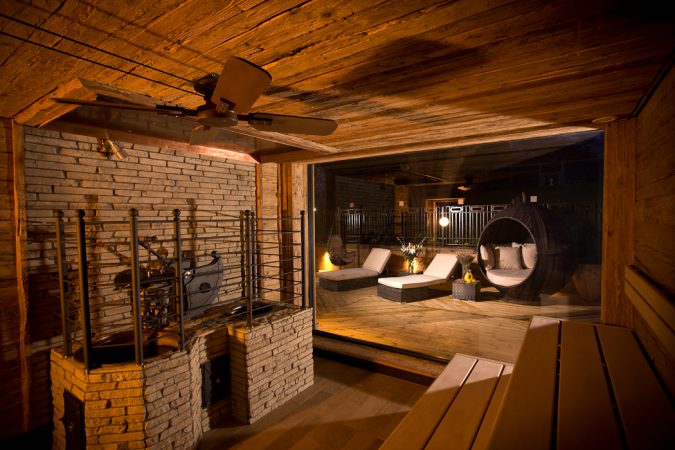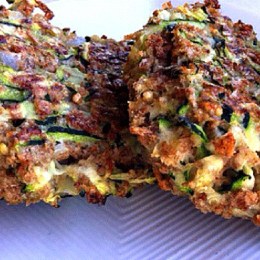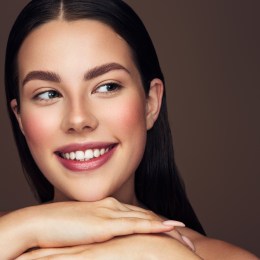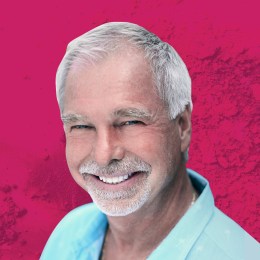It’s time to get wet behind the ears again and deliver water and steam therapy with sophisticated simplicity or highly impressive extensive prowess – the renewed importance of water therapy in the spa today. By Spa Guru Kirien Withers.
In the early days of spa, water immersion and treatments with water were essential components of the spa experience. It was what defined a spa as a spa, as opposed to a salon or a clinic. And the guests loved it.
In the early Noughties, when spa experiences were on everyone’s wish list, a key driver of desirability was the point of difference created by the water experiences that offered in the spa time out or treatment.
When the Spa Association launched in the 1990s, its definition of what a business needed to hang out the spa shingle was firstly a water experience or treatment of some type – that is, beyond a normal shower or having water poured over the body from a jug. Then it went into change rooms, relaxation areas etc.
But first and foremost it was about the water: Salus per Aqua (S.P.A.), meaning Healing Through Water.
Over time, thanks firstly to a good old Aussie drought, as well as the many commercial restraints of building and running water-based facilities, spas
were built with no or very little water for experiences or treatments.
At first the guest cried, “this is not a spa”, but over time the clients got used to it and a spa was not necessarily expected to deliver water anymore.
But interestingly, that was exactly when the high desirability of spas began to wane.
Salus Per Aqua was spa’s key point of difference. It wasn’t just a swimming pool, a normal shower, a standard bathroom spa tub. It was something special – it was water therapy.
Even if the healing was delivered within a relatively normal bath, the experience was not “normal” because it was within a beautiful treatment room, perhaps looking out over a garden, and the bath was filled with rose petals on top of the bubbles and smelt divine: that so-very-precious time out.
WELLNESS RISES UP A NOTCH
Over the last few years it’s all been about the emergence of clinical cosmeceuticals and injectables, the move to (and then away) from buying skincare on the internet, the trend toward social spa-ing rather than quiet time out (and back again!).
But in the last 12-18 months, all consumer trend reports are indicating a deeper shift back into wellness.
Perhaps led by younger clientele rejecting the “less than real” trends, the new demand is for very real experiences, very natural. It doesn’t matter about the label and the marketing.
I’m not suggesting that you cancel the injecting specialist – the queue is still long for natural-looking enhancement.
But take note: spa therapy could be making a super-resurgence very soon if we read the wind and respond well. According to my sources where this is already happening around the world, water is crucial. It makes all the difference!
WATER OPTIONS TODAY
Gone are the days of water-guzzling Vichy showers, complex hydrotherapy systems and the old superhero – the scotch hose!
Every experience we deliver needs to not only take into account the client’s wellness experience but also the environmental impact.
So what works now?
We asked Spa Vision and Geyser Australasia, Australia’s two leading water experience providers, to give us the low-down.
VISION FOR THE FUTURE

Spa Vision (SV) has recently celebrated its 10th anniversary of consulting to and supplying fit-out and equipment for spa and wellness locations, hotels and destinations, medi spas and luxury residences throughout the world.
With their head office in Bath, UK, Spa Vision has recently opened an Australian office to bring their hydrothermal bathing expertise and equipment supply service to their growing Asia Pacific clientele,
Hydrothermal bathing areas can be defined as a collection of hydrotherapy and thermal experience rooms set at various temperatures, each having individual benefits as well as a collective benefit for the guest.
They also provide social spaces where guests can enjoy spa and wellness together outside the treatment room. They encourage group participation and are ideal for small or large groups to experience wellbeing in a shared space.
The recommended etiquette for bathing to maximise health benefits is to alternate hot and cold experiences (showering off between each one for hygiene) with occasional resting periods in either a hydro pool or relaxation area.
Unless included as part of a hotel room cost, generally a guest pays a one-off fee to use hydrothermal facilities, usually for a specific period of time or dependent on the package they have purchased. Or they purchase a more extensive bathing membership.
No therapists are required to operate hydrothermal areas. However SV always recommend that spa attendants are available to maintain the area, supervise and answer any questions guests may have.
THE EXPERIENCES
Certain hydrothermal experiences such as the hydro pool, steam bath, sauna and showers will be familiar to most, but some such as the Stone Bath, Herbal Sauna, Salt Cascade Experience and Snow Storm may be less recognisable.
These unique experiences not only allow the guest a variety of experiences at different temperatures with differing benefits, they will give a facility a major point of difference from competitors.
The Snow Storm, for example, delivers Arctic freshness at the press of a button with snowfall, wind and other optional sound effects.
It’s all about creating a wellbeing experience that is memorable: this is why guests will return.
It’s also important to have plenty of space for relaxation, as this creates a sense of space and an invitation to rest.
The Stone Bath is a thermal experience like no other. Mineral stones held in an iron basket are heated to high temperatures in an oven and a mechanical iron lever will rise every few minutes dramatically before dipping into a cauldron of cold water.
This fusion of heat and water creates a theatrical sizzling noise as the resulting steam raises and is distributed into the room. The basket returns to the oven and the cycle starts again, giving the guest time to acclimatise and enjoy the experience.
The Stone Bath works incredibly well as a standalone thermal experience or can be used in a sequence with other hot and cold experiences in larger spas and wellbeing centres.
It can be designed as a stone or wooden room using traditional or modern materials to suit other decor.
THE BUSINESS MODEL
SV designs their hydrothermal experience areas to attract guests who want to spend a morning, afternoon or full day in a spa and wellness facility.
An operator would charge from $80-$120 for a half day in this type of bathing area (dependent on target market and location).
The facility can be designed to accommodate up to 60 guests at any one time comfortably and up to 150 guests per day (eg. 60 guests per day paying $100 per visit = $42k sales a week).
Full day and residential packages (for hotels) could be offered in combination with spa treatments, a floor plan could comfortably support demand for 8-12 treatment rooms (eg. 8 treatment rooms operating at 4 treatments a day each at $100 per one hour treatment = $22.4k sales a week), again dependent on the volume of guests desired.
In addition to the conservative sales estimates above, you have sales from retail and F&B to add to the total.
TIME TO GO HYRDOTHERMAL
Australia is well behind many other countries in offering such experiences. In parts of Europe it’s not uncommon to see spa and wellness facilities with up to 20 hydrothermal experiences attracting guests in large numbers.
There have been few, but very successful, examples in Australia of large scale.
A notable example is Peninsula Hot Springs on Victoria’s Mornington Peninsula, which has been offering spa and wellness to large volumes of guests for well over a decade, with natural hot springs being the main attraction.
With wellness growing worldwide and with Australia posting the highest growth globally in Wellness Tourism 2013-2015 (85 percent growth) and with wellness tourism expected to grow to US $808m by 2020, there are tremendous opportunities for those looking to invest.
Even a smaller operator can capitalise on the trend by introducing a Rasul or Hammam as part of the guest journey, allowing a charge to guests for the experience, providing a quick ROI and something unique to competitors.
Hydrotherapy areas also work incredibly well in medispa and clinical environments both as a pre and post treatment wind-down and recovery.
Contra-indications allowing, hydrothermal bathing adds value to the guest/patient experience by encouraging them to spend more time at the facility and provides an excellent differentiation.
In Europe, even dental tourism has embraced this model as part of their overall treatment package. benefits of steam bathing and hydro spa systems, to provide high integrity know- how and to make available in Australia superior systems, such as Mr Steam from the US. Their reputation as outstanding hydrotherapy specialists has grown rapidly.
Geyser director Adrian Barr says that Geyser’s focus is on working with all project stakeholders to provide high quality customised hydro thermal experiences for guests, while providing a great return on investment and choice of options for client comfort, energy and water usage, and ease of maintenance.
Whether the project requires a larger hydrotherapy bathing facility or is a small location needing a special point of difference, Adrian says that selecting the right partner is paramount to delivering the best outcome.
This is not only to provide an exceptional guest experience but also to help with the choice of the ideal custom solution for the demographic, staffing levels, fit with facility menu, water availability, plumbing and physical parameters.
Steam showers with aromatherapy, chromo (colour) therapy, mist shower option and massaging body jets are a most suitable small or large location experience.
But it is steam environments that are globally moving into highest demand, with no sign of slow down.
Geyser’s partnership with Mr Steam is a high value relationship for Geyser clientele. The Mr Steam parent company, Sussman Automatic Corporation, is to this day a family-owned business after 100 years of producing solely steam and spa products.
From patenting commercial steam systems to introducing home steam bathing in the 1960s, their heritage, knowledge and genuine interest in developing the steam bathing market in Australasia complements Adrian’s 25-year career in waterproofing, ventilation and wet area or shower system product developments for commercial, residential and retail clients.
We asked Adrian to give examples of Geyser’s expertise and he described their approach for a recent client:
Spa consultant Naomi Gregory of Spa Sessions appointed Geyser to deliver a feature Hammam as the centre point of a new day spa being built on a scenic vineyard in country Victoria.
Geyser was able to bring some fresh thinking and innovative materials to the project, along with the international suppliers’ longevity know-how. It resulted in a beautiful barrelled-ceiling Hammam, scaled to suit the available space and budget, with reduced running costs and a world-class finish.
Another great example of project partnership between Geyser, the builder and client is the new Hammam at The Bath House, Hepburn Springs, the iconic Australian world-renowned spa and wellness attraction in Victoria.
The final project brief was shaped by all parties, based around space allocation and the user experience desired.
The Hammam location, footprint and environment provided a number of challenges, particularly the high mineral content of the water which had created a maintenance issue for the equipment used for the prior existing steam rooms.
The ambient air temperature within the space was already high, and the small footprint challenged locations to distribute new humidity safely and quietly for client comfort.
All of these issues were overcome by selective sourcing of the right equipment to deliver a quiet, comfortable and efficient spa attraction for this important destination to Australian tourism.
Steam rooms and Hammams can be flexible in their experience options. Guests can visit on their own, as a couple or as a social group.
A room with a minimum dimension of 2.5 x 3.5 metres can double as a hands-on treatment space with two treatment tables and a hand-held hose for exfoliant or body mask application and a tactile experience wash off, whilst doubling as a room cleaning aid.
Hammams can be customised by adding Chromotherapy (colour therapy), cooling mist shower, and/or a brine system that introduces a salt spray into the room – giving a client all the skin and respiratory benefits of a salt room but without having to create a standalone environment.
Adrian stresses the importance of high quality consultation to ensure the final choice of a water and steam experience is appropriately tailored to the demographic, menu of the spa and physical location and its restraints.
Be aware of adding features for the sake of being different and ignoring function. I quote the wisdom: “Minimalism is not having enough but having the right amount.”




